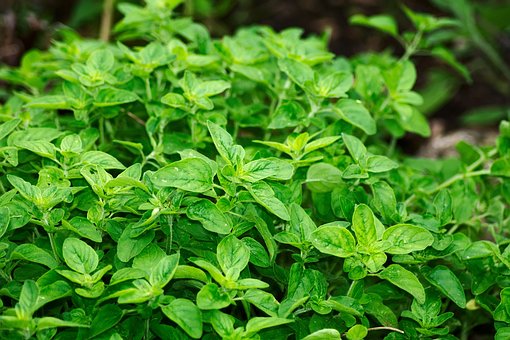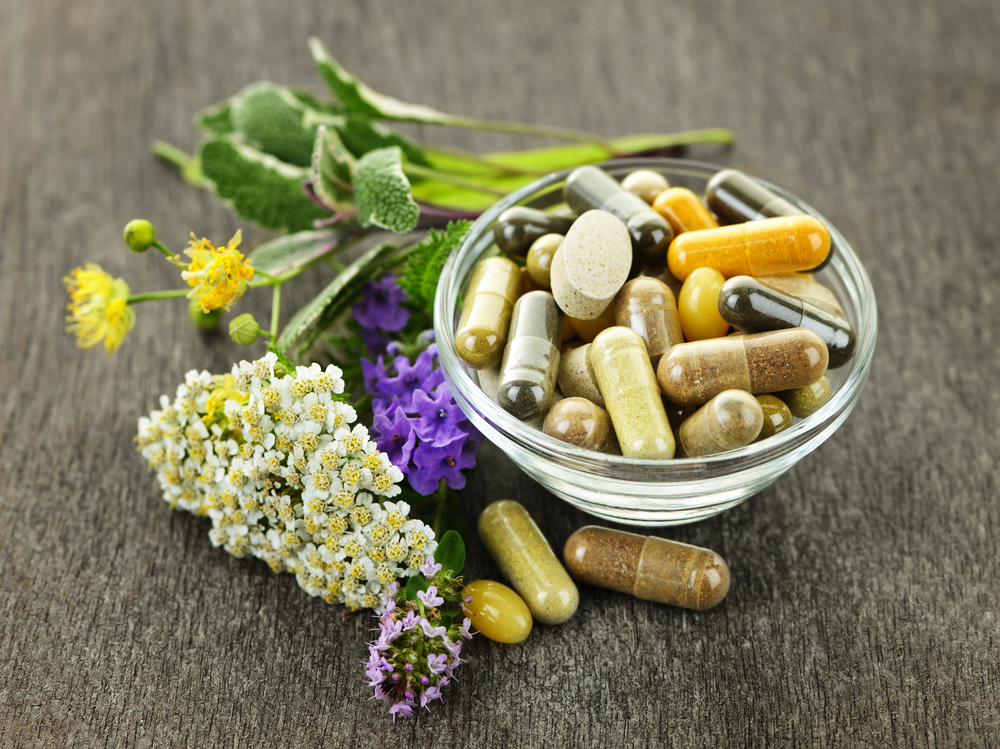Oregano is a herb that comes from the mint family. It has been used by people for thousands of years to improve the taste of their food and to address various health concerns. It features in the Mediterranean diet.
The Greeks and Romans linked oregano to positive emotions like joy and happiness. The name “oregano” comes from the Greek words for “mountain” and “joy.”
There are different types of oregano. The type of oregano that is most common is called Oregano vulgare. This oregano is also known as Spanish thyme and wild marjoram. Oregano is used in the diet, as a supplement and an aromatic oil.
People around the Mediterranean region have used oregano for centuries in herbal medicine to treat many ailments, including:
- skins sores
- aching muscles
- asthma
- cramping
- diarrhea
- indigestion
- colds
- to boost overall health
Scientists need to do more research to confirm the benefits of using oregano, but there is some evidence that it could help:
- fight bacteria
- relieve inflammation
- regulate blood sugar and lipids
- fight cancer
Oregano and other herbs provide antioxidants. Dietary antioxidants help the body eliminate free radicals, which are harmful substances that result from natural processes and environmental stresses. A buildup of free radicals can trigger oxidative stress. If cells are damaged by oxidative stress, it can cause various diseases such as cancer and diabetes.
Oregano Health Benefits
1. Antibacterial Properties
The main components of oregano essential oil are carvacrol and thymol. Carvacrol is the main active ingredient in oregano oil. These may have antimicrobial properties.
A 2019 laboratory study found that carvacrol and thymol prevented various strains of Staphyloccus aureus bacteria from developing in meat and dairy products. This suggests that it could help control bacterial growth in foods.
As worries increase about diseases developing immunity to antibiotics, researchers have conducted laboratory tests to explore the consequences of oregano oil on various microbes that are unaffected by other medications. The oil was effective in killing 11 different types of bacteria. This suggests that substances in oregano could play a role in fighting diseases that no longer respond to antibiotics.
The compounds in oregano may have antibacterial properties, but that doesn’t mean that eating oregano will prevent infections. Vitamin C is an important nutrient that helps to keep the immune system functioning properly.
2. Anti-Inflammatory Properties
One literature overview suggests that oregano oil and its components, such as thymol and rosmarinic acid, may have anti-inflammatory properties. In animal studies, oregano extract has reduced inflammation that could lead to:
- autoimmune arthritis
- allergic asthma
- rheumatoid arthritis
The fact that the studies used concentrated extracts of oregano is important to note.
Inflammation may contribute to a wide range of chronic diseases including type 2 diabetes, heart disease, and obesity.
3. Protecting Against Cancer
Oregano contains ingredients with cancer-preventing properties. Scientists have found evidence that oregano extracts can help prevent DNA damage due to oxidative stress, radiation, or mitogens. Carvacrol and thymol may prevent melanoma cells from growing and spreading.
Oregano provides antioxidants. Dietary antioxidants can help the body eliminate free radicals. A buildup of free radicals can trigger oxidative stress. If cells are damaged by oxidative stress, it can cause various diseases such as cancer. A diet rich in antioxidants may help prevent cancer by preventing cell changes that can lead to cancer.
4. Diabetes
Compounds in oregano may help manage type 2 diabetes. Authors of a 2016 rodent study concluded that Origanum extract may help:
- improve insulin resistance
- regulate the expression of genes that affect fat and carbohydrate metabolism
- restore damaged liver and kidney tissues
The authors observed that some people use oregano leaves and oil to control high blood sugar levels. Type 1 diabetes is an autoimmune disease. There is no definitive cause for the condition, but oxidative stress is thought to be a contributing factor.
In 2015, researchers found that an extract of oregano improved diabetes in mice.
5. Depression
In 2018, scientists looked at how treatment with oregano oil and other substances affected rats with depression caused by chronic unpredictable stress. The rats that were given oregano as a treatment showed improved stress-related behavior after 14 days. Oregano may help to relieve stress-related behavior, according to the study authors.
6. Digestion
Oregano is a great culinary herb for aiding in digestion. Not only is it effective, but it tastes good, too. Who doesn’t want their medicine to taste good?
Its signature flavor is famous for adding tomato-based dishes such as pizza and marinara sauce for pasta. It is commonly used in spice blends like za’atar, herbes de Provence, and adobo seasoning. The spicy nature of oregano makes it a good choice for treating cold symptoms.
Do you suffer with stagnant digestion? You may have this condition if you experience slow stomach emptying, a heavy feeling in the gut long after eating, flatulence, belching, a thick white coating on the tongue, feeling frequently bloated, and slow transit time in the bowels. You can use oregano to help with healthy digestion by adding a small amount to your meals as a seasoning.
To help with the more unpleasant symptoms of cold and sluggish digestion, I recommend drinking it as a strong tea.
7. Antimicrobial
Oregano essential oil has been shown to be a powerful antimicrobial agent against a variety of bacteria and fungi. A randomized study showed that an oregano extract ointment decreased bacterial contamination and infection of post-surgical wounds.
To use oregano for external purposes, you can make it into a tea or use it as a diluted tincture to kill pathogens on your skin. It is often used internally for digestive pathogens.
I suggest using it as a tea or tincture rather than an essential oil. When using the essential oil externally it needs to be properly diluted as some people may be sensitive to its effects. The amount it needs to be diluted by will vary depending on the person.
Tea made from oregano leaves or a diluted solution of oregano can be used as a mouthwash. For best results, hold the liquid in your mouth for several minutes (up to 20 minutes) at a time.
8. Colds and the Flu
Oregano leaves can be used to help relieve cold and flu symptoms. If you prepare it as a tea or an herbal steam, it can help to clear up congestion in your sinuses and lungs.
When you have a fever and feel cold, oregano tea or a bath with oregano tea can help make you feel warmer by supporting the fever process. If you have a sore throat, drinking honey or tea can help relieve the pain.
A study found that all 13 of the hot herbal drinks tested were effective against strep throat bacteria. Results from the study showed that oregano was one of the most effective herbs at inhibiting the growth of the strep throat bacteria. The study concluded that oregano tea is a safe and effective way to manage the symptoms of strep throat.
The authors of the study suggest that the antibacterial and antibiofilm properties of oregano tea may be due to various mechanisms, including the direct destruction of cells, the inhibition of cell growth, and the prevention of protein synthesis. Essentially, oregano tea can help to break down the biofilms that bacteria form to protect themselves from antibiotics.
9. Delayed Menses
Oregano has been used for hundreds of years to stimulate delayed menstruation. Teas that induce a period will typically cause uterine contractions and prompt the uterus to shed its lining.
To make an oregano tea: take 1 tablespoon of oregano for every 1 cup of water. Pour the cup of hot water over the oregano and allow to soak for 5 minutes. Let it cool, then strain the infusion through a mesh sieve. You can drink this 2 to 3 times per day.
Late periods can be caused by pregnancy, hormonal changes, stress, or a high intake of caffeine (e.g. chocolate, coffee, soft drinks). Disorders like polycystic ovarian syndrome (PCOS) can also result in late or early periods.
DO NOT DRINK OREGANO TEA if you are pregnant. Oregano should not be used in large doses (beyond culinary use) during pregnancy.
In order to find the best oregano for your teas, it is important to consider where it was grown and how it was processed.
Growing Oregano
There are over 50 species in the Genus Origanum. Oregano is a plant that belongs to the mint family. It has square stems and leaves that grow in pairs on opposite sides of the stem. Oregano does well in hot climates and soils that drain quickly. It’s a perennial herb that grows in zones 4-10. You can easily grow oregano in your garden or in a container.
If you water your plant too much, it will make the flavor weaker, so be careful not to use too much water. Oregano really does prefer the heat! Oregano grown in cold, damp climates may be less spicy.
The leaves are shaped like an egg with a pointy end. The flowers can be different colors including white, pink, and purple. Each flower has five petals that are fused together into a tube. The flowering stalks can reach two feet high.
You should harvest your oregano just before the flowers bloom. I harvest some oregano for myself, and then leave some oregano to flower for the bees because they love this plant so much. Bees love these flowers!
Taste the oregano leaves as they are growing to see why it is best to harvest them before they flower. Young oregano is usually hot and fragrant, with a bright flavor.
The more mature oregano, especially during or after flowering, has a more bitter or turpentine flavor which is not pleasant. But, give a taste and see what you think.
To harvest oregano, cut the tops with sharp scissors, right where the leaves meet the stem. Cutting the leaves too close to the plant will prevent it from continuing to grow.
If you want to grow oregano, plant it in your garden, in a container outside your door, or on your windowsill. That way, you can easily harvest it.
If you’re not interested in growing your own oregano, you can find it at your local farmer’s market or the fresh herb section of your grocery store. A good quality oregano leaf will be aromatic and taste spicy and hot.
It is best to buy organic and fair trade dried oregano to get the best quality and to help people and the planet.
If your oregano is several years old, it’s probably time for a new one. Give it a taste to see if it’s vibrant. If the oregano is not fresh, compost it and get some that is freshly dried.
Cooking Tips
Oregano leaves can be used to add flavor to a range of dishes, whether they are dry or fresh. Oregano is a herb that tastes good with tomatoes and is often used in pizza and pasta sauces. People also add it to:
- baked goods
- vegetable dishes
- legumes, such as lentils and chickpeas
- fish
- chili dishes
Here are some tips for adding it to food:
- While cooking, sprinkle meat, chicken with oregano for flavor.
- Use it in marinades or stuffing.
- Chop and mix into bread or pizza dough for a herby flavor.
- Add fresh oregano leaves to a salad.
- Sprinkle onto slices of mozzarella cheese and tomato, and drizzle with olive oil.
To moderate the flavor, try the following:
- Add toward the end of the cooking process for maximum flavor.
- Chop, crush, or grind the leaves to release more flavor.
- Start with a small amount and scale up, as too much can make the food bitter.
If a recipe asks for one tsp of dried oregano, this is equivalent to three tsp of fresh oregano.
Oregano can be bought either dried or fresh in grocery stores.









